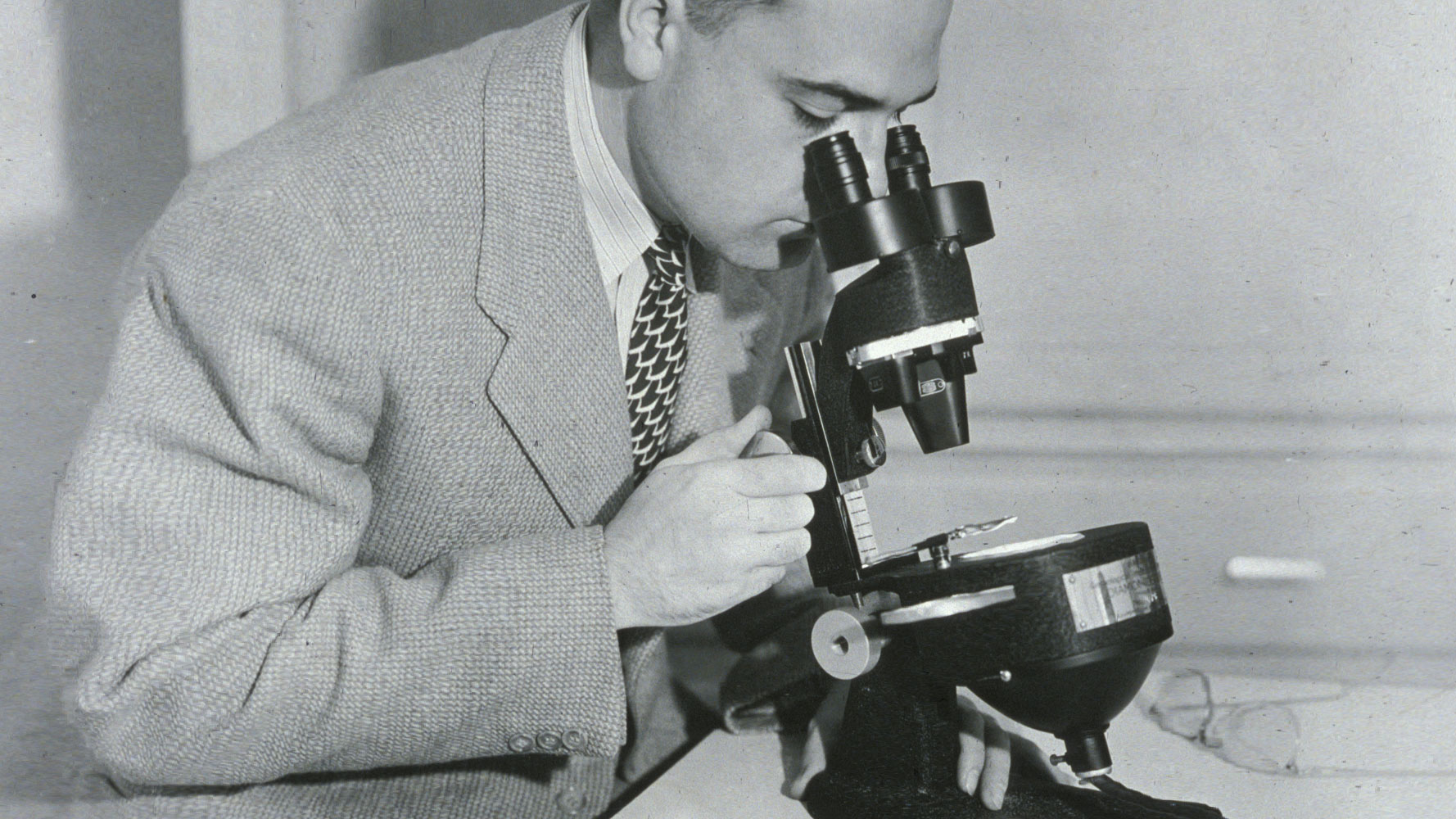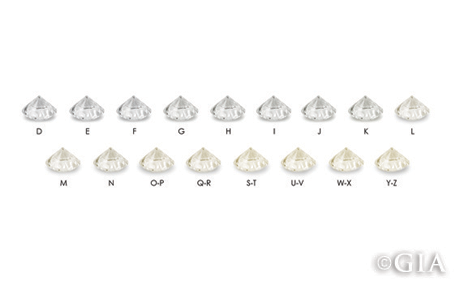
Every diamond has its own personality and characteristics, much like each of us. This can make choosing the best diamond a difficult decision, especially if you don’t know the basics. While there is always personal preference, design, and price to consider when choosing a gemstone, the best place to start is to develop an understanding of the 4Cs of diamond grading. Once you are informed, you can then apply your own eye for shape and details, letting your heart decide just which diamond is truly the one for you.
What are the 4Cs?
Many years ago, the diamond market was largely unregulated and there was no standard way of judging a diamond’s quality or setting its price. You might have heard generic, subjective terms like “cut well” or “cut poorly” when shopping for a diamond at your local jeweler. In the 1940s, this all changed when Robert M. Shipley, the founder of the Gemological Institute of America (GIA), coined the term “4Cs” to help gemology students remember the four factors that characterize a faceted diamond: cut, color, clarity, and carat weight. The concept was simple, but it changed the course of diamond history.

Today, this method of determining a diamond’s characteristics has become the universal standard. Not only does this allow the industry to communicate in a standardized language, but it allows you, the consumer, to understand exactly what you are buying.
Diamond Cut Grade
Cut is arguably the most important of the 4Cs, by any industry standard (and especially by us). The right cut not only unlocks a diamond’s beauty and sparkle but it can also hide inclusions, dim the appearance of color, and make a diamond seem larger than its carat weight to the naked eye. All of this while the wrong cut completely destroys a diamond’s appearance, making it look like a dull, lifeless rock.
Diamond cut is made up of many aspects, all of which add up to determine the final grade and beauty of each stone:
Polish: As a diamond is polished, it develops a mirror-like surface. The more accomplished the polisher, the more luminous the luster.
Symmetry: Both art and science, a diamond cutter must ensure that every facet of the diamond is perfectly aligned, mirroring and complementing its opposing facets. The more symmetrical the facets, the greater the sparkle.
Proportion: Proportion dictates how the diamond refracts light. A well-proportioned diamond exhibits fire, brilliance, and scintillation.
Brilliance: Brilliance is a technical term for the abundance and return of white light from a polished stone.
Fire: It is not just white light. Fire refers to how light splits into the spectral colors of the rainbow and moves within a diamond. Royal Asscher diamonds release the most incredible intensity of diamond fire based on industry-standard measurements.
Shape/Finish: The final product is the overall shape and arrangement of facets to create a diamond you fall in love with at first sight.
Here at Royal Asscher, diamond cutting is a calling nearly two centuries old. Since cutting our very first diamond in 1854, Royal Asscher’s impeccable reputation for cut craftsmanship has led to some of the finest, most revered diamonds in history. Every Royal Asscher diamond is cut beyond beauty, with
proportions that fall within strict parameters so that each facet is absolutely perfect. It is this standard, along with our proprietary, patented cut designs, that gives Royal Asscher Cut diamonds their unprecedented dispersion of color and light, setting them apart from the market.
Diamond Color Grade
While most people probably don’t think of diamonds as having any color, this is not the case. In fact, truly colorless diamonds are only the most rare of a wide range of diamond color grades. The official GIA diamond color scale was developed in the 1950s, to make sense of a market full of subjective terms that
were quite inconsistent. Because terms like “white”, “blue-white”, and “AAAA” already existed, the new color grade scale took on an alphabetical range, beginning with “D”, which is colorless, and ending with “Z”, which represents light yellow, brown, or gray.

Total, there are 23 letter grades on this scale, which are then divided into five subcategories: colorless (D-F), near-colorless (G-J), faint (K-M), very light (N-R), and light (S-Z). For the untrained, unaided eye, slight color distinctions are often not noticeable, yet they can have a significant effect on a diamond’s price.
Beyond the D-Z color scale, natural fancy color diamonds can be found that have deeper, more apparent body colors than “light”. These colors are a rainbow spectrum of hues including yellow, orange, pink, green, blue, gray, and even black. These remarkably rare and fascinating colors will often have secondary colors, which you will find listed as “light greenish-yellow” or “vivid orange-pink”, for instance. All diamond color, unless it has been created by laboratory treatments (which should always be disclosed), is caused by trace elements occurring during a diamond’s natural growing conditions deep within the Earth’s crust.
Royal Asscher diamonds are independently laboratory color-graded in perfect standardized lighting conditions. Our diamonds are either coloress (D/E/F) or near-colorless (G/H/I). If you are interested in a natural fancy color diamond, our Bespoke Diamond Service can help make your dream diamond a reality. Contact us at bespoke@asscher.nl.
Diamond Clarity Grade
It takes billions of years of intense heat and pressure to form natural diamonds, deep underground, into the brilliant baubles we cherish today. This natural process often includes disruptions and trace elements that leave their subtle mark on a completed octahedral diamond crystal. These marks are what we call “clarity characteristics” and much like human fingerprints, no two diamonds will ever have the same characteristics.
Diamond clarity characteristics are divided into two categories: inclusions (which are fully contained within the stone) and blemishes (which are confined to the stone’s surface) and these come in all manner of shape, size, and color. Overall, diamond clarity grade is based on the number, size, relief, nature, and position of each diamond’s characteristics as well as how these affect the visual appearance of the stone. The clarity scale is as follows:
FL: Flawless; no internal or external inclusions or blemishes.
IF: Internally Flawless; no inclusions, only insignificant blemishes.
VVS1/2: Very, Very Slightly Included; minuscule inclusions, impossible to see with the naked eye and very difficult to detect at 10x magnification.
VS1/2: Very Slightly Included; minor inclusions that are impossible to see with the naked eye and somewhat difficult to detect with 10x magnification.
SI1/2: Slightly Included; small but noticeable inclusions that are clear at 10x magnification and may also be noticeable by the human eye.
I1/2/3: Included; obvious inclusions visible to the naked eye.
Diamond Carat Weight
Contrary to popular belief, carat weight is in fact not a measure of a diamond’s size, but rather its weight. The origins of the term “carat” go back several centuries when early gem traders used carob seeds as measures of weight in their scales. The name stuck, and in the early 20th century, the weight of
a carat was set at 200 milligrams or 0.2 grams, and is still used today as industry standard. There is no “carat grading scale” as in the other 4Cs, it is simply a single, objective measurement.

While larger carat weight diamonds do tend to be larger in physical size, the manner in which their weight is distributed in the final cut stone can make or break the diamond’s beauty and appearance. This is why cut grade and design is so important. A well cut diamond will have its weight perfectly distributed to make the most of it, rather than being too deep (which may face up smaller) or too shallow (which might face up wider) and losing its brilliance through light seepage.
While most of us wouldn’t turn down a large diamond, it’s true that the heavier the diamond, the rarer they are, with only one diamond in history weighing more than 1,000 grams. This diamond, the Cullinan, is an important part of Royal Asscher history, as Joseph Asscher was given the honor of cutting this
unprecedented 3,106-carat rough diamond in 1908. Its fashioning set the precedent by which all of today’s Royal Asscher Cut Diamonds are designed. But note that here at Royal Asscher, we do not cut for carat weight. Rather, each of our signature diamonds are cut to maximize their incredible beauty and
brilliance, no matter the size.
Choosing the best diamond for you
We hope that an understanding of the 4Cs will aid you in selecting the diamond of your dreams, but ultimately, we always believe in following your heart. We like to say that “the right diamond will speak to you”, each a breathtaking miracle of nature refined by a master’s craft. Explore our exemplary collection of fine diamond jewelry, set with signature Royal Asscher Cut diamonds, or schedule a call with our Royal Asscher Bespoke Services, and we will personally assist you in turning your diamond dreams into reality.



